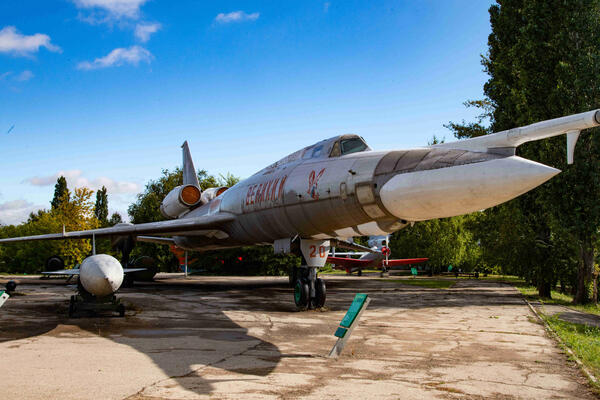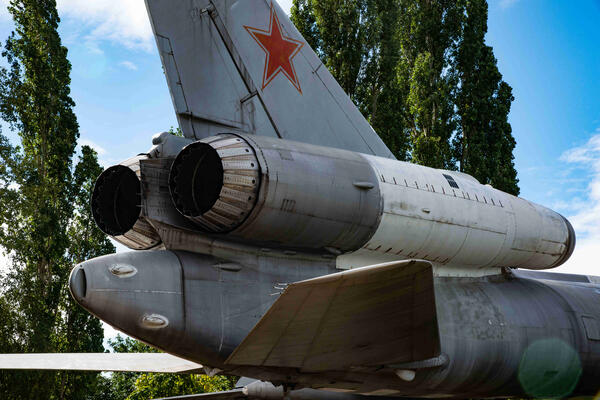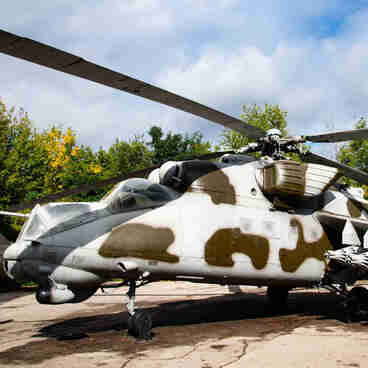The Tu-22KD medium-range supersonic missile carrier was developed at the OKB-156 under the leadership of Andrey Nikolayevich Tupolev. The Tu-22K entered service in 1967.
This aircraft was a modification of the first Soviet-made supersonic bomber Tu-22. The twin-engine mid-wing cantilever monoplane Tu-22K had three independent hydraulic systems. One of them was for emergencies.
The crew cabin was air-conditioned, the bomb bay was heated and the entrance hatches were sealed. The bomber was fitted with ejection seats. They were downwards-firing and were equipped with life support systems and emergency supplies.
The minimum height at which the crew could eject was 350 meters. The aircraft was controlled by ailerons, elevators and rudder with the help of hydraulic actuators.
To simulate pressure on the yoke and pedals, by which the pilot judged how controllable and balanced the aircraft was, spring devices with trim tabs were connected to the control surface. They allowed to stabilize the aircraft when flying within the range of operational speeds.
The Kh-22 “Burya” cruise missile was placed under the fuselage of the missile carrier. It was designed to hit naval and large ground targets with a conventional or nuclear warhead. Onboard electronic equipment ensured that the missiles could acquire and track large naval targets at a distance of up to 250 kilometers.
The aircraft could also function as a bomber. In this case, up to 9 tons of high-explosive bombs could be loaded on board. This modification of the Tu-22 aircraft was equipped with an aerial refueling system. The letter “D” designated this feature. In total, about 70 missile carriers of this modification were manufactured.
Tu-22 aircraft family were used in combat operations in Afghanistan, and were exported to Iraq and Libya. Presently, the Tu-22KD missile carriers have been decommissioned from the Long-Range Aviation of the Russian Aerospace Forces.
This aircraft was a modification of the first Soviet-made supersonic bomber Tu-22. The twin-engine mid-wing cantilever monoplane Tu-22K had three independent hydraulic systems. One of them was for emergencies.
The crew cabin was air-conditioned, the bomb bay was heated and the entrance hatches were sealed. The bomber was fitted with ejection seats. They were downwards-firing and were equipped with life support systems and emergency supplies.
The minimum height at which the crew could eject was 350 meters. The aircraft was controlled by ailerons, elevators and rudder with the help of hydraulic actuators.
To simulate pressure on the yoke and pedals, by which the pilot judged how controllable and balanced the aircraft was, spring devices with trim tabs were connected to the control surface. They allowed to stabilize the aircraft when flying within the range of operational speeds.
The Kh-22 “Burya” cruise missile was placed under the fuselage of the missile carrier. It was designed to hit naval and large ground targets with a conventional or nuclear warhead. Onboard electronic equipment ensured that the missiles could acquire and track large naval targets at a distance of up to 250 kilometers.
The aircraft could also function as a bomber. In this case, up to 9 tons of high-explosive bombs could be loaded on board. This modification of the Tu-22 aircraft was equipped with an aerial refueling system. The letter “D” designated this feature. In total, about 70 missile carriers of this modification were manufactured.
Tu-22 aircraft family were used in combat operations in Afghanistan, and were exported to Iraq and Libya. Presently, the Tu-22KD missile carriers have been decommissioned from the Long-Range Aviation of the Russian Aerospace Forces.






